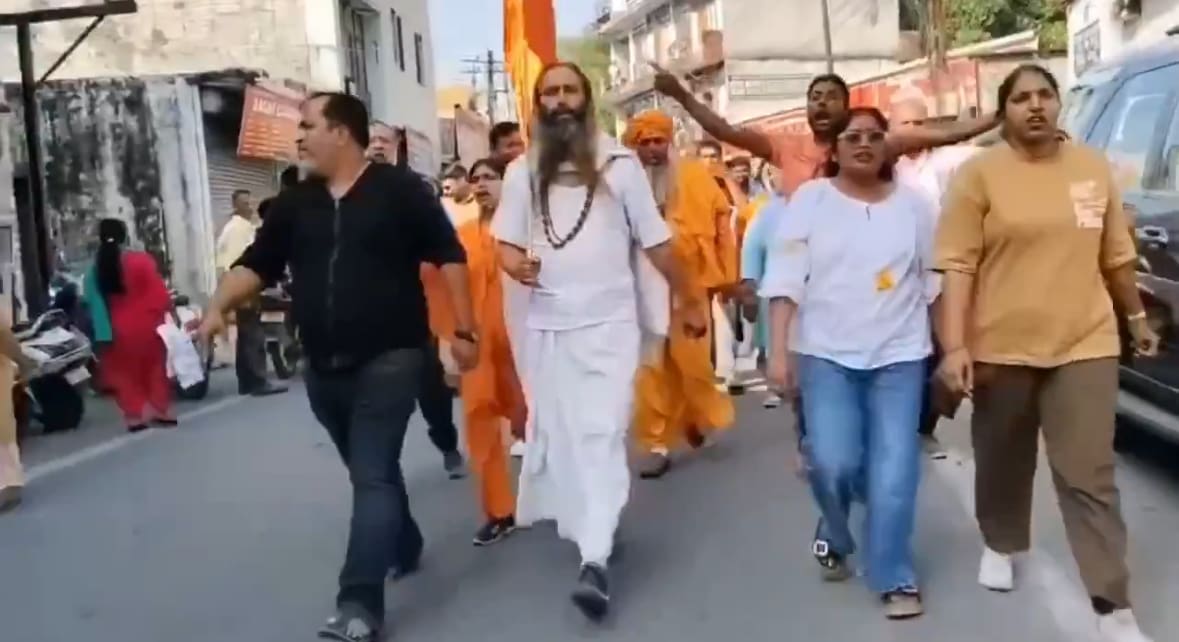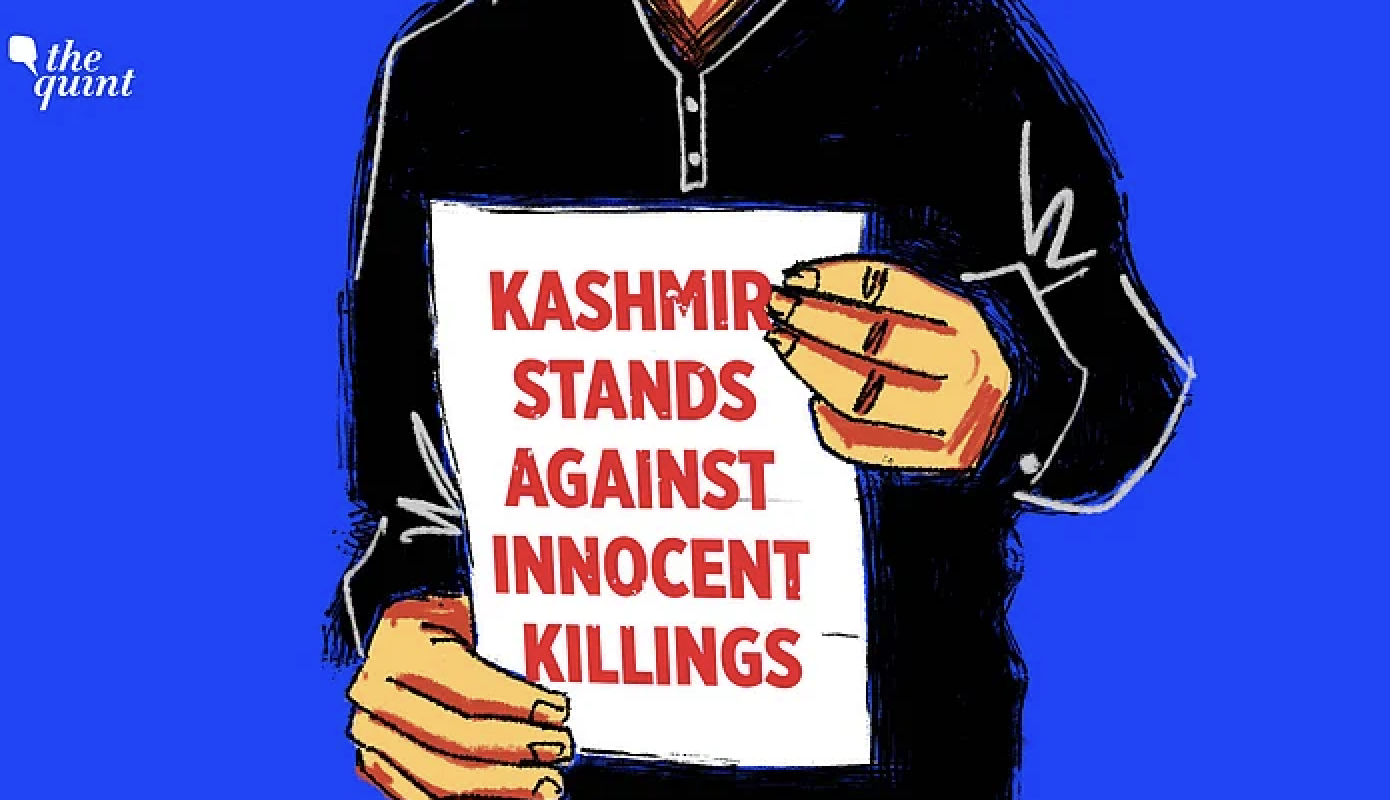By Mukul Kesavan
The most interesting — and insidious — aspect of this election is the mainstreaming of the sangh parivar’s principal belief: that India is a Hindu nation.
The ideologues of the Rashtriya Swayamsevak Sangh have consistently maintained that India as a nation ought to be defined by the culture and preferences of its Hindu majority and that minorities ought to defer to this idea of India as a Hindu nation state. The definitive statement on Hindu hegemony came from the second sarsanghchalak or supreme chief of the RSS, M.S. Golwalkar: “…the non-Hindu people in Hindusthan must either adopt the Hindu culture and language, must learn to respect and revere Hindu religion, must entertain no idea but the glorification of the Hindu Nation…” If they don’t, they “…may stay in the country wholly subordinated to the Hindu nation claiming nothing, deserving no privileges, far less any preferential treatment, not even citizens’ rights.” Golwalkar’s unambiguously Hindu supremacist position used to embarrass the Bharatiya Janata Party (not because of what he had said, but on account of the starkness with which he said it) and was often explained away by gesturing at its context — the politics of the 1930s when India was a colonized country, threatened by Muslim separatism. The implication was that the BJP had evolved ideologically and no longer wanted Muslims to be treated as helots in republican India.
However, after the electoral defeat of 2009, as the party regrouped around its most polarizing leader, Narendra Modi, it became less shy about its Hindu supremacist project. One straw in the wind was the BJP’s admission of Subramanian Swamy, the sole proprietor of what remained of the Janata Party, into its ranks.
In 2011, Swamy wrote an article in a newspaper that updated Golwalkar for the 21st century. This was his prescription: “Implement the uniform civil code, make learning of Sanskrit and singing of Vande Mataram mandatory, and declare India a Hindu Rashtra in which non-Hindus can vote only if they proudly acknowledge that their ancestors were Hindus. Rename India Hindustan as a nation of Hindus and those whose ancestors were Hindus.”
Swamy joined the BJP soon afterwards in 2013 and he has been one of the BJP’s most visible spokesmen through this election season, a regular in news television’s panel discussions and a trenchant champion of Narendra Modi’s Gujarat Model. That a man who advocates the disenfranchisement of all Muslims who don’t acknowledge that they are basically lapsed Hindus should be treated as a respectable party spokesperson on prime time news tells you something about both the New Model BJP and the biases of the news industry.
Try to imagine a Muslim advocating the assimilation of Kashmir into an Islamic caliphate, becoming a regular on ‘Left, Right & Centre’ or ‘The Newshour’ or ‘The Buck Stops Here’ and you begin to grasp the extent to which majoritarianism has been normalized by prime time television and its panel discussions.
There is a curious consensus in both the print and the broadcast media that the BJP has replaced its traditionally communal agenda with a new emphasis on development and governance. Curious because a) there is no contradiction between a focus on economic growth and a commitment to Hindu chauvinism and b) in actual fact, Amit Shah and Praveen Togadia and Narendra Modi were happy to dogwhistle their Hindutva agendas right through their election campaigns.
Thus Amit Shah, performing for a gathering of Jats in western Uttar Pradesh, attacked Mayavati for giving a ‘particular community’ (read Muslims) 19 tickets for the Lok Sabha elections in UP. Helpfully Shah suggested that Mayavati had allotted these seats to a community that violated the honour of his audience’s sisters and daughters. A few days later, after apologizing to the Election Commission for his political rhetoric, he was at it again: this time describing Azamgarh as a base for terrorists.
Not to be left behind by his consigliere, the BJP’s prime-minister-in-waiting denounced the Congress for promoting meat export and cow slaughter. The Congress, he alleged, gave subsidies to those-who-slaughtered-cows. On another occasion, Modi expressed a marked preference for hosting Durga-loving Bengalis as opposed to Bengalis of any other sort, leaving us wondering who those others might be. Bengali Vaishnavs, perhaps, disinterested in the cult of a mother goddess? Calcutta’s Marwaris? Its Armenian Jews? Who?
To everyone’s utter surprise, it turned out that Modi had been referring to Bengali-speaking Muslims, aka Infiltrators or Bangladeshis. Ever the man of action, Modi found new allies in his virtuous crusade against Bengali Muslims in Assam. After armed Bodos had killed a considerable number of Bengalis, Modi promised to deport the rest.
Earlier in the election campaign, Modi made the important point that the Congress was killing rhinos to free up living space for Bangladeshis. This is not a secularist canard or some magical realist flourish, this is what he actually said: “Aren’t rhinos the pride of Assam? These days there is a conspiracy to kill them. I am making the allegation very seriously. People sitting in the government… they are carrying out this conspiracy to kill rhinos so that the area is made clear to settle Bangladeshis.”
The fantasy of demographic extinction via mass immigration is a hardy staple of majoritarian right-wing politics everywhere, but casting rhinos as stand-ins for aboriginal Hindus is a novel touch.
The BJP leadership’s concerted attempt to stigmatize Muslims as fifth columnists, infiltrators and predators has, predictably, turned Muslims against the prospect of a BJP government. Polls and other guesstimates often show Muslims voting en bloc against the BJP whereas the party captures a much larger share of the non-Muslim vote.
This wholly explicable difference in Muslim and non-Muslim voting patterns has, by a strange sleight of hand, been read by pundits as a symptom of a condition that Marxists used to describe as ‘false consciousness’. Thus, while India’s other human species are seen to be voting for well-being and voting their aspirations, Muslims are simply voting their fears. And given that the BJP’s election campaign was branded early on as a non-sectarian pitch for growth and governance, these fears, it followed, were unfounded.
Sadanand Dhume, who concedes that Muslims have reason to be wary of Modi, still sees Muslim opposition to the BJP as a kind of political outlier: “Viewed through the narrow prism of the Muslim community’s concerns, Mr. Modi remains a troubling choice to lead India. But apply an economic lens to the country as a whole — not just the Muslim minority that makes up 14% of the country’s 1.2 billion people — and the choices look different.”
The problem with this judgment is that a minority community’s view of Modi is a ‘narrow lens’ only if you think that its predicament and its fears are irrelevant to Indians who aren’t classed as a religious minority. Except that they are, as even a cursory acquaintance with South Asian history will show.
Thus, Sri Lanka’s majoritarian turn, where the Sinhala Buddhist majority made a bid to become the sole proprietor of the Sri Lankan nation state, led to endless violence and a bloody civil war which brought that country’s economy to a standstill for twenty years.
The eager media consensus that sees Narendra Modi and Subramanian Swamy as agents of economic rationality and Indian Muslims as paranoid dead-enders is a grotesque inversion of India’s political reality. Given the BJP’s unremitting hostility towards them, Muslims are the rational actors here; not voting for a party that loathes you is a reasonable thing to do. Asking Muslims to admit that they are basically Hindus, on the other hand, isn’t.
If a Modi sarkar were to act on Swamy’s supremacist fantasies or fashion Shah’s slanders into institutionalized suspicion or convert Modi’s dog-whistling into policy, India might well turn into a tinderbox. And if Indian newspapers and television channels continue to normalize extremist rhetoric into ‘common sense’, they will be remembered for having had a hand in sowing the wind.
This story was first appeared on sacw.net






